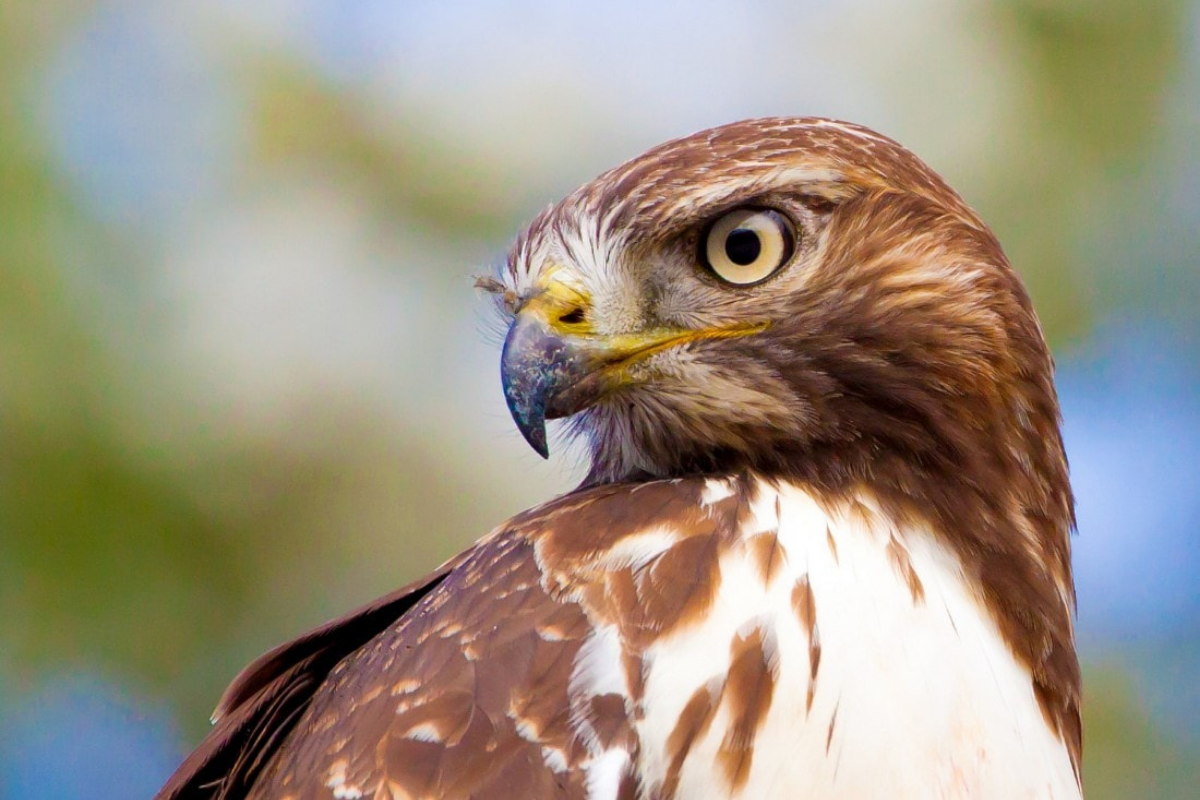by Priscilla Feral
My fascination with red-tailed hawks stems from a pair named Pale Male and Lola who were evicted from their NYC high-rise nest at an upscale building on Fifth Avenue and 74th St. on Dec. 7, 2004. This upheaval produced an uproar among high-profile TV personalities including Mary Tyler Moore, along with the building’s residents and other hawk admirers.
The two celebrated hawks were kicked out by the co-op board following complaints of rodent and pigeon remains raining down on the front entrance. Their huge, twig-filled nest on a 12th-story ledge that overlooked Central Park was deemed a health and safety hazard and unceremoniously removed. With rapidity, a persuasive campaign erupted to bring the nest back, and architects were hired by the same board to develop a new nest design.
Two weeks later, workers lowered a 300-pound stainless-steel cradle filled with twigs to the ledge the hawks had called home for a decade. Pale Male and Lola appeared as if on cue. The boat-shaped nest also had a new key feature: a rim to keep rodent and pigeon leftovers from falling to the street. Problem solved. Birdwatchers were overjoyed. As one resident who brought his children to New York City to see the resilient hawks said, “We think we own the city, but we don’t. We are just borrowing it.”
In the following years, reports were made about Pale Male’s other mates, with dozens of chicks hatched. Volunteers and birdwatchers used the Internet to record every detail of the hawks’ lives—when eggs appeared in the nest, the hatching of chicks in mid-April and Pale Male swooping down to provide his mate with food.
At home in Rowayton, Connecticut, and at Friends of Animals’ Darien headquarters, hawk watching stirs all kinds of emotions in me depending on what I’m seeing. On rare occasions, I’ve seen a Cooper’s hawk prey on smaller birds attracted to our winter bird feeder. I call this hawk, “Mr. Vicious,” and I’m a conflicted fan, happy the raptor is thriving, but anxiously wanting it to move to another block. One time in desperation, we stopped feeding birds for two weeks so the Cooper’s hawk would find another hunting ground. When that happened, the songbirds and doves quickly returned to our feeder.
At the office, the daily lives of a pair of red-tailed hawks are center stage as I can see their nest high in the crown of a tall evergreen from my office window. On a day in late February, our Editor-In-Chief Nicole Rivardand I watched them fortify their nest with twigs they were breaking off nearby trees. We’ve also been glued to their aerial displays when they soar in circles, and return to other, lower tree branches to hunt and then feed on something they’ve caught. Nicole’s binoculars have brought them into focus when they are sunning themselves and preening to keep their feathers in the best condition.
Red-tailed hawks are commonly seen in most open habitats in North America, and are distinguished by their large, bulky size and reddish-brown tail feathers. The distinctive, hoarse cry they make to proclaim their territory sounds like a wild scream. Though protected under the Migratory Bird Act, they’re threatened by collisions with automobiles, shootings, rodenticide poisoning and human activities near their nests.
It’s thrilling to observe them sharing duties and incubating their eggs for about a month. The larger female is usually the hawk sitting on the nest, while the male hunts. Once chicks were born and left the nest about six or seven weeks later last June, we were captivated with their antics as well. Instead of flying high, the juveniles seemed to feel more comfortable sitting atop telephone poles and low tree branches above our parking lot. Their loud squeals appealing to mom and dad for food caused quite the raucous. Whatever hunting skills they needed to learn, there was a process unfolding that escaped us.
I hope our wonder over hawk-watching prompts you to do some respectful bird watching and wildlife watching of your own this summer. Please also read and share our story on rodenticides inside this issue to help protect birds of prey from these unnecessary, deadly poisons.
Photo by Mick Thompson

